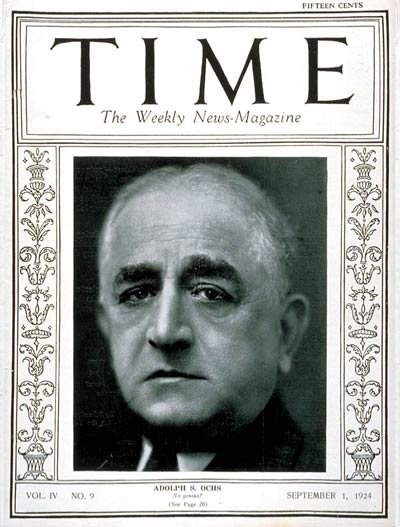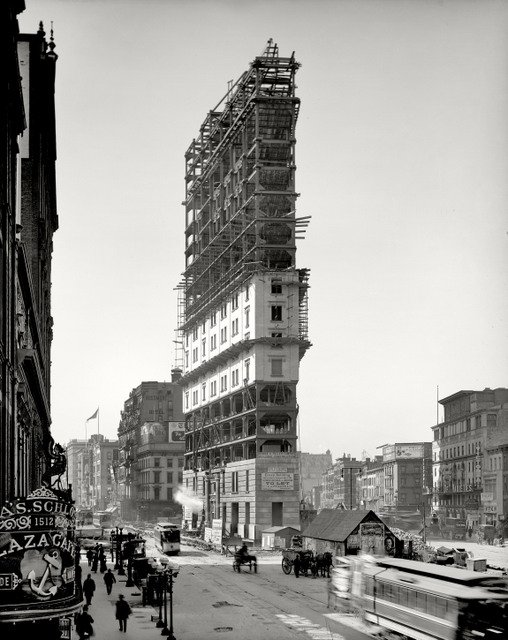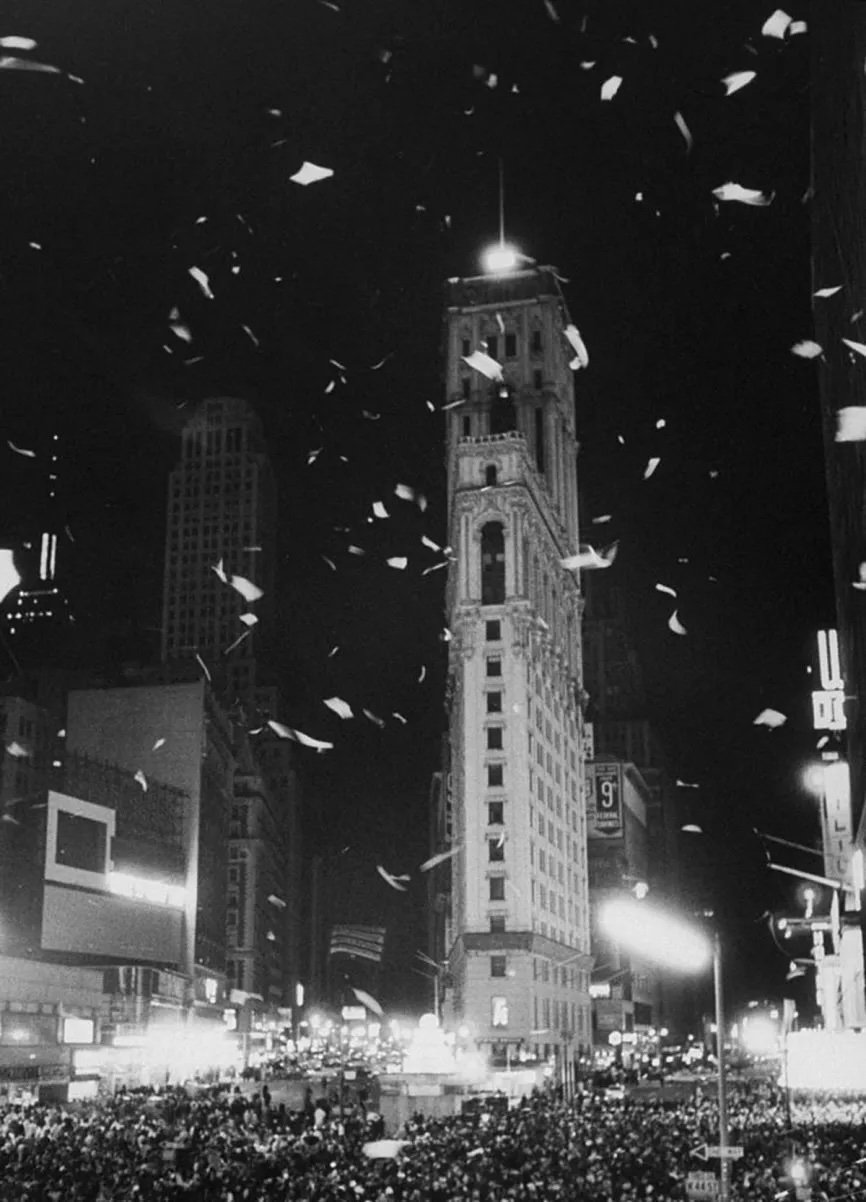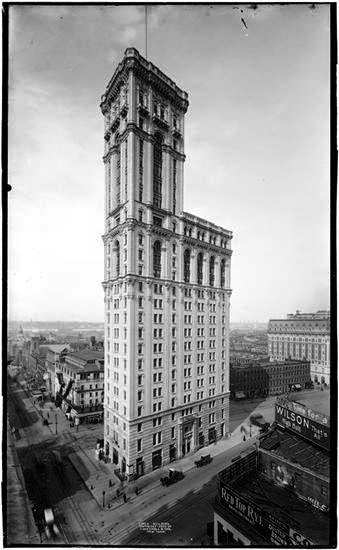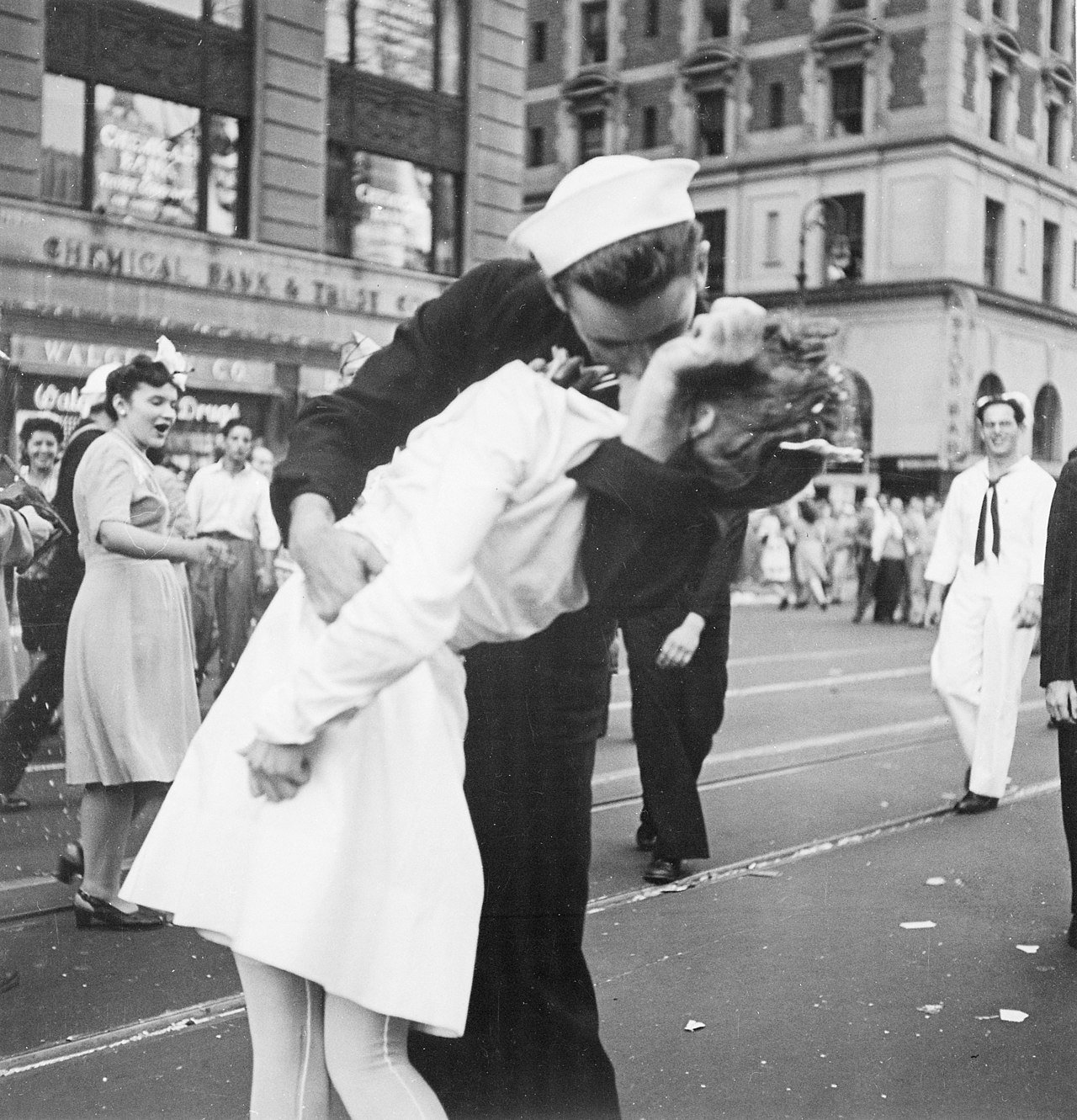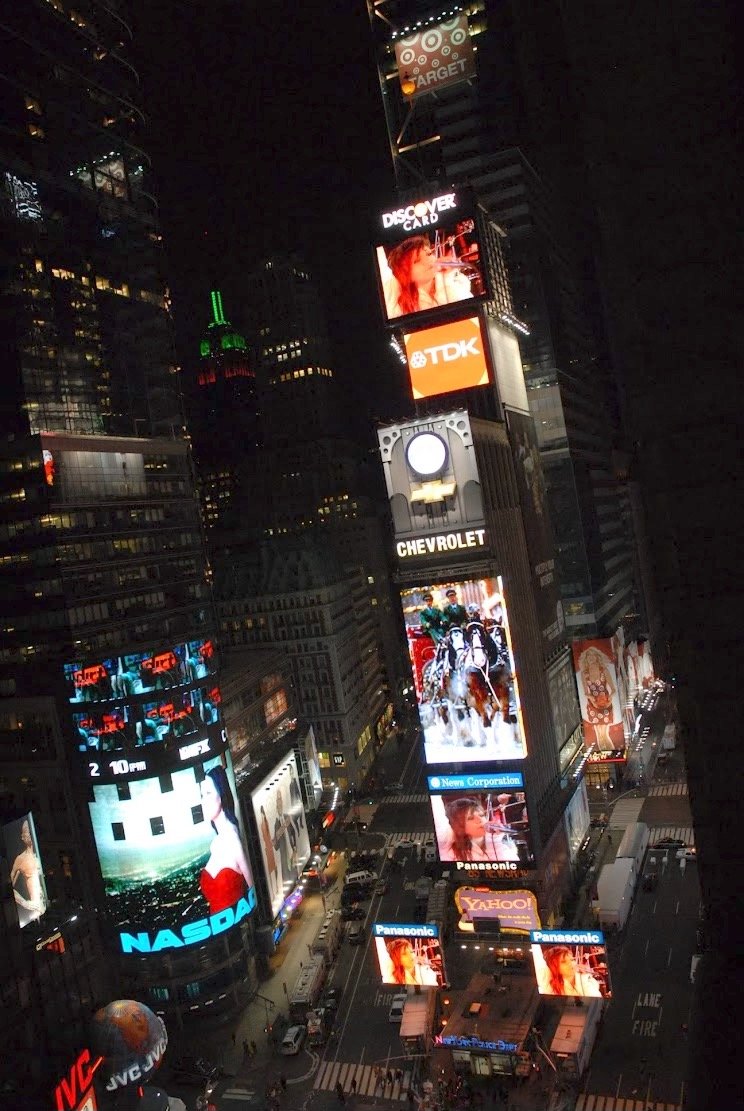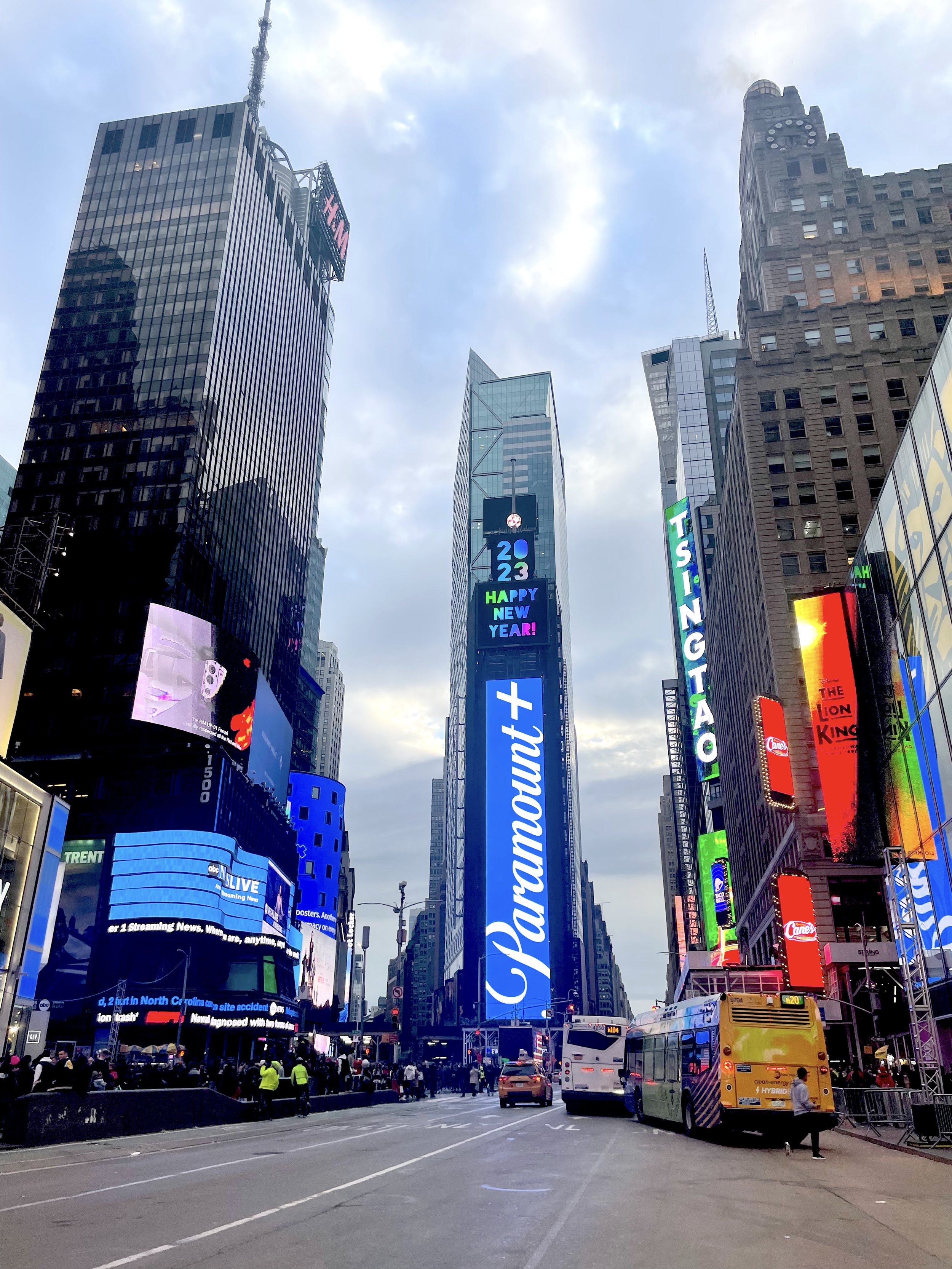The NY Times Building
It’s hard to imagine New York City without Times Square. It’s a major tourist attraction and as much as we New Yorkers might scoff at it, you can’t deny that its over-the-top grandeur is a sight to be seen. We often forget (or at least I do) as ‘Times Square’ rolls off the tongue so easily, that the area is named for our local NY Times newspaper!
Like all of Manhattan, at some point Times Square was wilderness. Early on, it was known as Great Kill (kill, the dutch word for river or stream) because there were a number of small streams that flowed down to a bay in the North River. Around 1870, this area had become the center of New York’s carriage industry and was named Longacre Square after Long Acre in London (that city’s carriage center). During this period of time the area was dubbed ‘Thieves Lair’ due to the crime and low brow entertainment and strangely enough… 100 years later would see the same.
Longacre Square 1898
Photo by Library of Congress
Longacre Square 1900, the future site of the NY Times building in the distance.
Photo by Museum of the City of New York
Before we go any further, let’s talk about the great Adolph Ochs, who would come to shape the Times Square we know today.
Photo by Time Magazine
In 1896, Ochs bought the NY Times, who were having financial issues, for a discounted $75,000. Already familiar with the publishing business as he had owned the Chattanooga Times since he was 19 years old, he went to work getting the paper back on track.
The Pabst Hotel and Rathskeller in 1900, future site of the NY Times Building.
Photo by The Valentine Company
Ochs had learned that the first NYC Subway—The IRT—would be running through Longacre Square as it made its way north. Therefore, in 1902 he announced that the Times would be moving to Longacre Square and constructing a new building to house its headquarters. He successfully predicted that having a subway stop close by would increase newspaper circulation. He had leased the ground that the struggling Pabst Hotel occupied and demolished it by the end of 1902.
The NY Times Building under construction
Photo by Library of Congress
The New York Times Building would officially open on January 1, 1905. To celebrate its opening Ochs had a fireworks display set off from the new building’s roof at midnight on New Year’s Eve. Little did he know he had just started a timeless tradition.
New York Times front page, 1905
Photo by Times Square Alliance
Did you know that on top of all the tall buildings in Times Square were metal rods with copper balls attached? At precisely noon each day (signaled by telegraph from the US Naval Observatory) the balls would drop so onlookers could use the moment to reset their watches. In 1908, Ochs had the idea of installing a brightly lit one atop the Times Building that would drop at midnight on New Year’s Eve! It’s also important to note that his fireworks display was banned because (as we know today) shooting them over a crowd of spectators poses some health risks.
Photo: NYPL Digital Archive
Photo: NYPL Digital Archives
Photo by Museum of the City of New York
It was also Ochs idea in 1928 to install a movable news screen, the ‘zipper’, around the base of the building. It would have a ticker tape style display of all the latest news headlines. Just another small transition towards what we know Times Square to look like today with its many scrolling news feeds. Notably, the building's ‘zipper’ display announced Japan's surrender, ending World War II, on August 14, 1945.
“Kissing the War Goodbye” by Victor Jorgensen
Photo by National Archive
In 1961, The Times sold their building (after they had moved a few blocks west to a larger space) to advertising executive Douglas Leigh who then sold it to Allied Chemical two years later. Unfortunately, in 1964 Allied Chemical stripped the neo-gothic building of its granite and terracotta down to the steel beams in a redevelopment. The renovations occurred just one year before the New York City Landmarks Preservation Commission gained the ability to prevent such architectural travesties from occurring. Upon completion in 1965, Allied Chemical renamed the building and had a 10 year run before putting the building up for sale again.
Allied Chemical Building
Photo by Wiki Commons
Throughout the 1970's and 1980's the building would change ownership a number of times as Times Square attempted to redevelop and rebrand itself. One Times Square was nearly demolished 2-3 times as developers proposed projects that would redefine Times Square’s landscape entirely. It did, however, take on more renovations and slowly morphed.
In 1995, Banque National de Paris bought the building at a foreclosure auction for $25 million and then sold it to Lehman Brothers for $27 million. Lehman Brothers understood that the future profits in the building wasn’t leased office space, but advertising. Therefore, they modified the entire facade with a steel mesh frame so that digital billboards could be installed. Two years after getting everything up and operating they sold the building (again) to Jamestown LLP, a real estate management and investment firm, for $110 million! Not a bad profit for Lehman Brothers.
Photo by Todd Doyle
Photo by Todd Doyle
In 2007, I was invited to a friend's office party in Times Square for New Year’s Eve and as you can see from the photos, it was something I’ll never forget.
Jamestown has maintained control of One Times Square ever since and is underway with a $500 million renovation project that started in the spring.
One Times Square 2023
Photo by Chris Baker
The most expensive advertising in the world, the core and soul of the building itself is lost within all the neon and electricity. Whenever I’m walking through Times Square I try to imagine what it looks like underneath all the mechanicals and futuristic displays… it's kind of the Darth Vader of New York City buildings.


